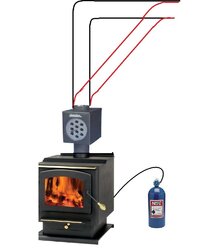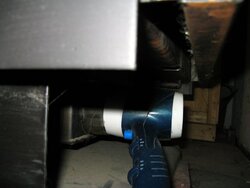Haven't had my NC-30 running much yet this winter (it's been a very mild November here in PA). The first two times I had it lit, it was at the end of October to cure the paint. The weather outside was damp, the inside of the basement was a littler higher humidity, etc. Starting the first (tried top down first before resorting to a traditional starting method) first resulted in a massive smoke mess spewing from the stove. Second fire, same result (doing both top down and traditional). Fast forward to last night, and temps were cool and dry outside and inside. I built a top down (even orienting the splits in opposite directions as I built the pile. Ended with a few paper knots. Got it lit, and immediately, the smoke was spilling out and filled the basement, and shortly thereafter, the upstairs as well. It took three lightings to get the small stuff on tip to heat the flu enough to get it going. Once it's going, the stove is fantastic, I just can't keep dealing with the smoke outs I'm experiencing starting it. The flu pip is 3' straight up, to a 90, then 4' horizontal through the block wall to another 90, and then straight up the side of the house (SS, double lined chimney). I never had a draft problem with my old smoke dragon using the same flu setup, so I don't think that's the problem. The wood is dry cherry and oak, and once it's burning, it's burning GREAT, so I know it's good, dry wood, so what's the deal?
I know in my old smoke dragon, I would light a paper ball and hold it under the flu opening inside the stove to get a draft established before I lit the fire, and every start was PERFECT. Now with the NC-30, the entire thing is lined with firebrick and thermal plates, so there are no direct openings to the flu, so doe the flu just heat much slower? How do I avoid so much smoke at start up?
I know in my old smoke dragon, I would light a paper ball and hold it under the flu opening inside the stove to get a draft established before I lit the fire, and every start was PERFECT. Now with the NC-30, the entire thing is lined with firebrick and thermal plates, so there are no direct openings to the flu, so doe the flu just heat much slower? How do I avoid so much smoke at start up?



